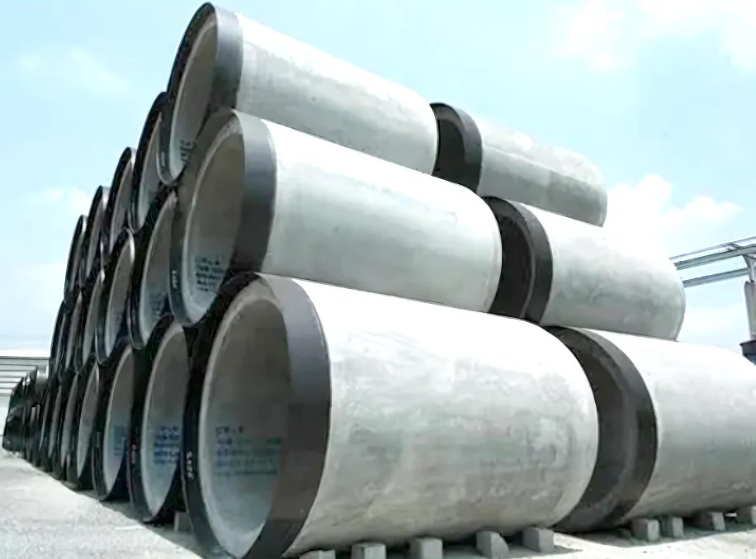- • Our RCC HDPE Lined Jacking pipes are available in various diameters, typically ranging from 600 mm to 2600 mm, to cater to different project requirements.
- • RCC HDPE Lined Jacking pipes are designed for trenchless installation methods, meaning they can be laid without the need for extensive excavation. This is a cost-effective and environmentally friendly method.
- • The pipes are made from reinforced cement concrete, offering strength, durability, and resitance to external pressures.
- • The inner surface is lined with HDPE to protect against internal corrosion, abrasion, and other environmental factors.
- • These pipes are used primarily in sewerage, stormwater, and wastewater applications where open excavation is impractical or impossible and internal resistance to corrosion are required.
RCC HDPE Lined Jacking Pipes
RCC HDPE Lined Jacking Pipes
2. Design and Manufacturing
- • • Material Composition: The concrete is reinforced with steel bars or mesh to withstand both internal and external forces, including earth pressure, water pressure, and mechanical stresses.
- • Jacking Forces: The design also takes into account the forces involved during the jacking process, which includes both the pushing force and the frictional resistance from the surrounding soil.
- • HDPE Liner Thickness: The thickness of the HDPE liner is designed based on the expected chemical exposure, pressure, and flow conditions. It provides a non-corrosive barrier to protect the RCC from aggressive environments.
- • MS or SS Collar: Mild Steel or Stainless Steel Collars are used in place of conventional Concrete Collars to withstand the forces involved during the jacking process.
- • Jointing Methods: The pipes are designed with specialized joints, such as bell-and-spigot or rubber-ring joints, to ensure watertight and durable connections between pipes.
- • The jacking method involves the use of hydraulic jacks to push the pipes through the soil from a starting shaft to a receiving shaft.
- • The method reduces the need for extensive surface disruption, making it ideal for urban areas or places where surface access is limited.

